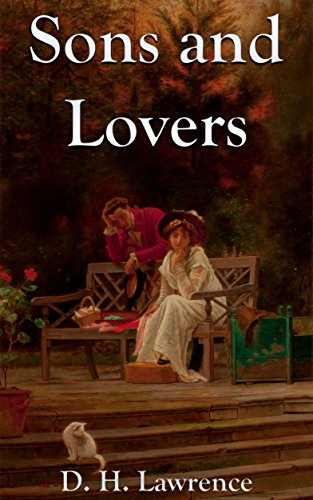The same psychology is evident in Paul Morel, the hero of the novel. He is an artist, and speaking psychologically, we may say that in art he finds compensation for his psychological traumas. Too sensitive and nervous to find joy in the external world, he finds self-fulfilment in the world of art and nature. Right from the dawn of life, Paul is prone to depression. Disharmony in his parents’ marital life produces in him a neurotic strain and makes him hypersensitive. “His neurotic refusal of life is the direct result of his parents’ failure.” To see them fighting bitterly, Paul is overpowered by the “horror of the sudden silence, silence everywhere.” His tortured soul is soothed only when he hears them coming up, together.
Paul suffers from utmost diffidence, shudders to face the outer world, and eventually leans on his mother more for the warmth of life. He thus proves to be an introverted and self-conscious personality. To him, the touch of any external reality, school, rustic and vulgar manners of the miners, his interview at the Jordan’s, library, etc., is an agonising experience. Lawrence comments on his plight at the Jordan’s-“Charles I mounted his scaffold with a lighter heart than did Paul Morel as he followed his mother up the dirty steps to the dirty door”.
Paul is a young man of an artistic nature. But this remains suppressed owing to the inability to establish a sane human relationship. He cannot help his mother’s soul-sucking love. The ability to look deep into his own consciousness cannot compensate for his inability to grow as an independent individual. Paul’s love for Miriam is a desperate attempt to free himself from the excessive attachment to his mother. He has to reconcile himself to her excessive spirituality, but he demands fleshly love of her. The disparity weighs heavily on his psyche. He loves his mother deeply but sometimes hates her for her antagonism toward Miriam. The demands of Clara, the sex symbol for Paul, are too much to be met by him, to inspire the imaginative artist in him, and to lead him to the “inner reality”. Miriam’s presence, however, exercises a very stimulating effect on his mind. It impels his imagination and stirs him into creative activity. In her contact, Paul gains insight and life warmth. Miriam urged this warmth into intensity like a white light. In breaking with Miriam, Paul severs himself from his inspiration and it virtually marks the death of the artist in him.
Paul’s artistic disposition finds an outlet in his drawings and paintings. Paul has an artistic bent of mind as evident in his love for nature and flowers. The painting of his ‘landscape’ gets the 1st prize at the Nottingham Castle Exhibition and is bought for 20 guineas. He is gifted with a rare insight and his paintings are a manifestation of his lifelong quest for ‘inner reality’.
The pursuit of art and intellect, such as French, algebra, or poetry, brings him inner satisfaction, and so does the world of nature. He would breathe a flower as if they loved each other. He has a rare insight and penetration and can see into the heart of things. He can paint the soul and not merely the externals. He is so engrossed in his work while working at a sketch that he becomes oblivious to his surroundings. To Miriam, he talks endlessly of his sketches, about his “love of horizontals”. He is grateful to the girls working at the factory who present him with the paint tubes. Paul appreciates that they have recognised his keen interest in painting. Later, after the death of his mother, when his zest for life has virtually cooled down, Paul returns to cheap novels and becomes indifferent to his painting. Thus, these intellectual activities are an internal part of his existence.

Leave a Reply